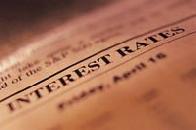
 |
|
| Financial Terms | |
| return on sales |
|
Information about financial, finance, business, accounting, payroll, inventory, investment, money, inventory control, stock trading, financial advisor, tax advisor, credit.
Main Page: tax advisor, stock trading, financial advisor, payroll, accounting, money, inventory control, investment, |
Definition of return on sales
return on salesThis ratio equals net income divided by sales revenue.
Related Terms:Sales returnsA contra account that offsets revenue. It represents the amount of sales made that were later returned. Return on assets (ROA)Indicator of profitability. Determined by dividing net income for the past 12 months profit ratiosRatios based on sales revenue for a period. A measure of CARs (cumulative abnormal returns)a measure used in academic finance articles to measure the excess returns an investor would have received over a particular time period if he or she were invested in a particular stock. Abnormal returnsPart of the return that is not due to systematic influences (market wide influences). In After-tax real rate of returnMoney after-tax rate of return minus the inflation rate. Annualized holding period returnThe annual rate of return that when compounded t times, would have  Arithmetic average (mean) rate of returnArithmetic mean return. Arithmetic mean returnAn average of the subperiod returns, calculated by summing the subperiod returns Average accounting returnThe average project earnings after taxes and depreciation divided by the average Average rate of return (ARR)The ratio of the average cash inflow to the amount invested. Conditional sales contractsSimilar to equipment trust certificates except that the lender is either the Contingent deferred sales charge (CDSC)The formal name for the load of a back-end load fund. Cumulative abnormal return (CAR)Sum of the differences between the expected return on a stock and the Days' sales in inventory ratioThe average number of days' worth of sales that is held in inventory. Days' sales outstandingAverage collection period.  Dollar returnThe return realized on a portfolio for any evaluation period, including (1) the change in market Dollar-weighted rate of returnAlso called the internal rate of return, the interest rate that will make the Domestic International Sales Corporation (DISC)A U.S. corporation that receives a tax incentive for Ex post returnRelated: Holding period return Exante returnThe expected return of a portfolio based on the expected returns of its component assets and Excess return on the market portfolioThe difference between the return on the market portfolio and the Excess returnsAlso called abnormal returns, returns in excess of those required by some asset pricing model. Expected future returnThe return that is expected to be earned on an asset in the future. Also called the Expected returnThe return expected on a risky asset based on a probability distribution for the possible rates Expected return on investmentThe return one can expect to earn on an investment. See: capital asset Expected return-beta relationshipImplication of the CAPM that security risk premiums will be  Foreign Sales Corporation (FSC)A special type of corporation created by the Tax Reform Act of 1984 that Geometric mean returnAlso called the time weighted rate of return, a measure of the compounded rate of Holding period returnThe rate of return over a given period. Horizon returnTotal return over a given horizon. Incremental internal rate of returnIRR on the incremental investment from choosing a large project Internal rate of returnDollar-weighted rate of return. Discount rate at which net present value (NPV) Leveraged required returnThe required return on an investment when the investment is financed partially by debt. Market returnThe return on the market portfolio. Money rate of returnAnnual money return as a percentage of asset value. Multiple rates of returnMore than one rate of return from the same project that make the net present value Portfolio internal rate of returnThe rate of return computed by first determining the cash flows for all the Price/sales ratio (PS Ratio)Determined by dividing current stock price by revenue per share (adjusted for stock splits). Rate of return ratiosRatios that are designed to measure the profitability of the firm in relation to various Realized returnThe return that is actually earned over a given time period. Required returnThe minimum expected return you would require to be willing to purchase the asset, that is, ReturnThe change in the value of a portfolio over an evaluation period, including any distributions made Return on equity (ROE)Indicator of profitability. Determined by dividing net income for the past 12 Return on investment (ROI)Generally, book income as a proportion of net book value. Return on total assetsThe ratio of earnings available to common stockholders to total assets. Return-to-maturity expectationsA variant of pure expectations theory which suggests that the return that an Riskless rate of returnThe rate earned on a riskless asset. Safety-net returnThe minimum available return that will trigger an immunization strategy in a contingent Sales chargeThe fee charged by a mutual fund when purchasing shares, usually payable as a commission to Sales forecastA key input to a firm's financial planning process. External sales forecasts are based on Sales-type leaseAn arrangement whereby a firm leases its own equipment, such as IBM leasing its own Subperiod returnThe return of a portfolio over a shorter period of time than the evaluation period. T-period holding-period returnThe percentage return over the T-year period an investment lasts. Time-weighted rate of returnRelated: Geometric mean return. Total dollar returnThe dollar return on a nondollar investment, which includes the sum of any Total returnIn performance measurement, the actual rate of return realized over some evaluation period. In Unleveraged required returnThe required return on an investment when the investment is financed entirely NET SALES (revenue)The amount sold after customers’ returns, sales discounts, and other allowances are taken away from NUMBER OF DAYS SALES IN RECEIVABLES(also called average collection period). The number of days of net sales that are tied up in credit sales (accounts receivable) that haven’t been collected yet. RATE OF RETURN ON STOCKHOLDERS’ EQUITYThe percentage return or profit that management made on each dollar stockholders invested in a company. Here’s how you figure it: RATE OF RETURN ON TOTAL ASSETSThe percentage return or profit that management made on each dollar of assets. The formula is: RATIO OF NET INCOME TO NET SALESA ratio that shows how much net income (profit) a company made on each dollar of net sales. Here’s the formula: RATIO OF NET SALES TO NET INCOMEA ratio that shows how much a company had to collect in net sales to make a dollar of profit. Figure it this way: RETURN ON INVESTMENT (ROI)In its most basic form, the rate of return equals net income divided by the amount of money invested. It can be applied to a particular product or piece of equipment, or to a business as a whole. Accounting rate of return (ARR)A method of investment appraisal that measures Cost of salesThe manufacture or purchase price of goods sold in a period or the cost of providing a service. Internal rate of return (IRR)A discounted cash flow technique used for investment appraisal that calculates the effective cost of capital that produces a net present value of zero from a series of future cash flows and an Return on capital employed (ROCE)The operating profit before interest and tax as a percentage of the total shareholders’ funds plus Return on investment (ROI)The net profit after tax as a percentage of the shareholders’ investment in the business. Sales mixThe mix of product/services offered by the business, each of which may be aimed at different customers, with each product/service having different prices and costs. Target rate of return pricingA method of pricing that estimates the desired return on investment to be achieved from the Purchase returnsA contra account that reduces purchases by the amount of items purchased that were subsequently returned. SalesAmounts earned by the company from the sale of merchandise or services; often used interchangeably with the term revenue. Sales discountsA contra account that offsets revenue. It represents the amount of the discounts for early payment allowed on sales. Sales journalA journal used to record the transactions that result in a credit to sales. internal rate of return (IRR)The precise discount rate that makes the return on assets (ROA)Although there is no single uniform practice for return on equity (ROE)This key ratio, expressed as a percent, equals net return on investment (ROI)A very general concept that refers to some Internal Rate of Return (IRR)The discount rate that equates the present value of the net cash Return on Common Equity RatioA measure of the percentage return earned on the value of the Return on Total Assets RatioA measure of the percentage return earned on the value of the accounting rate of return (ARR)the rate of earnings obtained on the average capital investment over the life of a capital project; computed as average annual profits divided by average investment; not based on cash flow internal rate of return (IRR)the expected or actual rate of return of capitalthe recovery of the original investment (or principal) in a project return on capitalincome; it is equal to the rate of return multiplied by the amount of the investment return on investmenta ratio that relates income generated sales mixthe relative combination of quantities of sales of the various products that make up the total sales of a company sales value at split-off allocationa method of assigning joint cost to joint products that uses the relative sales values of the products at the split-off point as the proration basis; use of this method requires that all joint products Internal rate of return a. The average annual yield earned by an investment during the period held. Gross salesThe total sales recorded prior to sales discounts and returns. Internal rate of returnThe rate of return at which the present value of a series of future Net salesTotal revenue, less the cost of sales returns, allowances, and discounts. Sales allowanceA reduction in a price that is allowed by the seller, due to a problem Sales discountA reduction in the price of a product or service that is offered by the Sales value at split-offA cost allocation methodology that allocates joint costs to joint book rate of returnAccounting income divided by book value. internal rate of return (IRR)Discount rate at which project NPV = 0. Related to : financial, finance, business, accounting, payroll, inventory, investment, money, inventory control, stock trading, financial advisor, tax advisor, credit. |